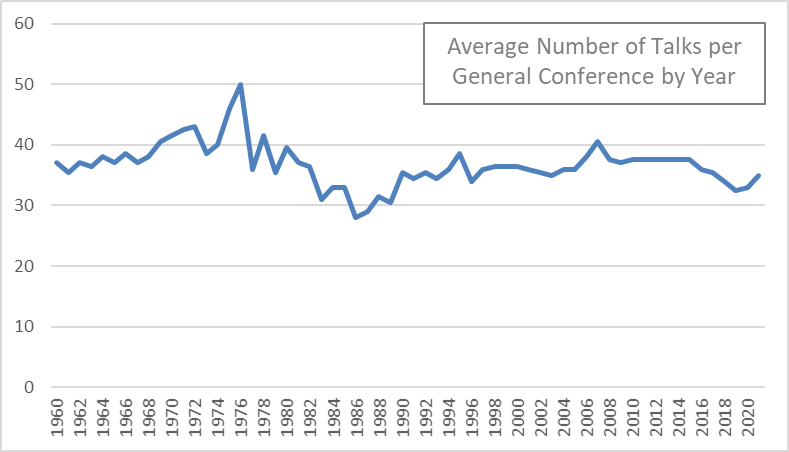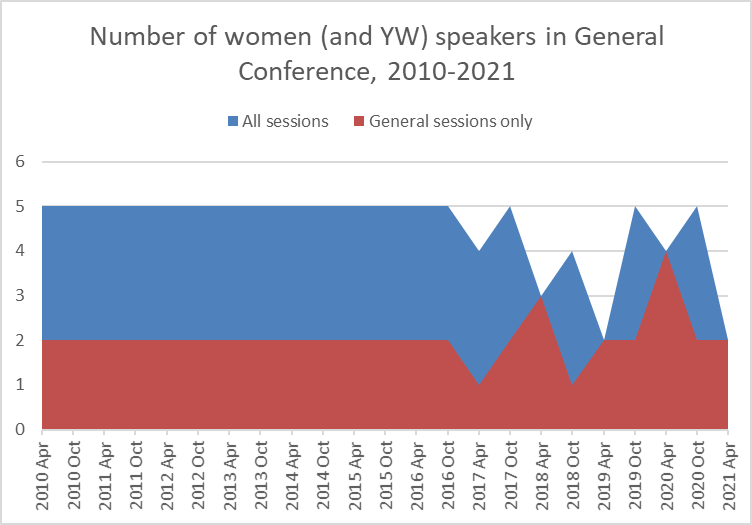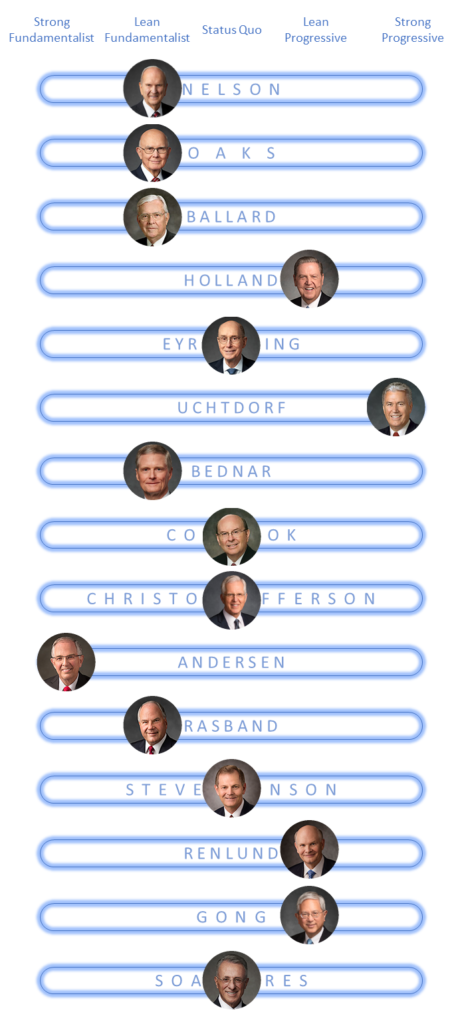I recently flipped through reports of General Conference from the 1960s (to get lists of speakers for my last post, as they’re only listed on the Church website back to 1971). I didn’t read through the talks, but even just looking at what the men conducting each session said, several things struck me that are different from my experience watching Conference, which started in the 1980s.
- David O. McKay used to conduct every single session. Starting from April 1960, the first time someone else conducted a session was in April 1962, when he allowed Hugh B. Brown to break his streak. And I didn’t check how far back into the 1950s it went. He might have been doing it for a decade. I have to admit that if, say, Russell M. Nelson had started doing this when he became Church President, it would strike me as overly controlling.
- Through October 1962, all new wards, stakes, and stake presidents were announced in Conference. It’s striking how much smaller the Church was that that could even be a possibility. I remember as a kid, hearing the story of how Spencer W. Kimball was called from being a stake president to being a member of the Q12, and how amazing that was. He was called in 1943. Given the size of the Church at that time, that seems much less remarkable than I had thought (and than it had been taught to me).
- The sustaining of Church officers included listing David O. McKay as trustee-in-trust for the Church. I don’t think I learned of the Church’s corporate structure until I read this series of posts by Daymon Smith at BCC a decade ago.
- Conference used to take three days, and was timed to always have one of the days fall on April 6th, even if it meant having the days be non-consecutive.
- The men conducting Conference used to often announce a rolling list of the next two speakers. For example, they’d announce that Elder A and Elder B would speak. Then Elder A would speak, and the man conducting would announce Elder B and Elder C.

 Up until the women’s session and priesthood session started alternating in April and October, there were typically two women speaking in the general sessions, plus three more in the women’s session. (The graph includes the RS and YW meetings before they were official Conference sessions.) It seems likely that two women speaking per conference is the norm we’ll go back to. This change will flow through to the rest of the curriculum too, which is so much all Conference all the time now, and we’ll hear from hardly any women at all. I’d like to hope that this was an unintended side effect of the change, but I also wouldn’t be surprised if it was a very much intended effect.
Up until the women’s session and priesthood session started alternating in April and October, there were typically two women speaking in the general sessions, plus three more in the women’s session. (The graph includes the RS and YW meetings before they were official Conference sessions.) It seems likely that two women speaking per conference is the norm we’ll go back to. This change will flow through to the rest of the curriculum too, which is so much all Conference all the time now, and we’ll hear from hardly any women at all. I’d like to hope that this was an unintended side effect of the change, but I also wouldn’t be surprised if it was a very much intended effect.